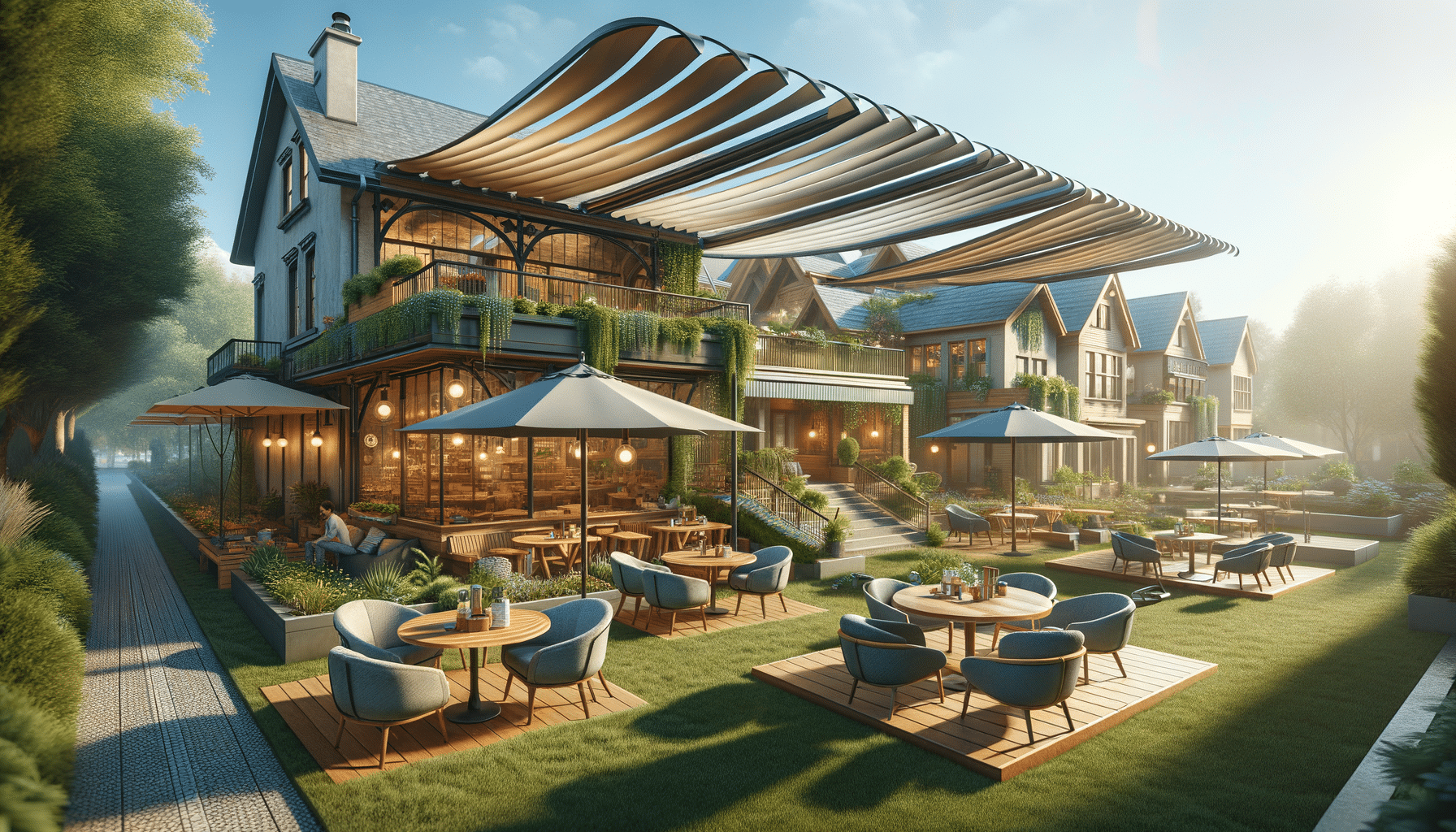
Unveiling the Functional and Aesthetic Perks of Awnings and Overhangs
The Practical Benefits of Awnings and Overhangs
Awnings and overhangs are not just decorative elements; they serve significant practical purposes. One of the primary benefits is their ability to provide shade, reducing the amount of direct sunlight that enters a building. This can lead to a noticeable decrease in indoor temperatures, which is particularly advantageous during the hot summer months. As a result, energy consumption for air conditioning can be reduced, leading to lower utility bills.
Moreover, awnings and overhangs protect against weather elements such as rain and snow. By shielding windows and doors, they help prevent water damage and extend the lifespan of exterior surfaces. This protection is particularly valuable in regions with harsh weather conditions, where the exterior of a building is constantly exposed to the elements.
Furthermore, these structures can improve the usability of outdoor spaces. By providing a sheltered area, they allow for outdoor activities and gatherings regardless of the weather. Whether it’s a patio, deck, or balcony, an awning or overhang can transform these areas into functional extensions of indoor living spaces.
Enhancing Aesthetic Appeal with Awnings and Overhangs
Beyond their functional advantages, awnings and overhangs can significantly enhance the aesthetic appeal of a building. They come in a variety of styles, colors, and materials, allowing for customization that complements the architectural design of a structure. This versatility makes them suitable for both modern and traditional buildings, adding character and charm.
For instance, a sleek, retractable awning can provide a contemporary look to a modern home, while a classic fabric awning with scalloped edges might be more fitting for a vintage-style property. The choice of material, whether it’s metal, fabric, or wood, also plays a crucial role in defining the overall aesthetic.
Moreover, awnings and overhangs can be used to highlight architectural features or create visual interest. By strategically placing them over windows or entryways, they can draw attention to these areas and enhance the overall curb appeal of a property. This not only adds value to the property but also makes it more inviting and visually pleasing.
Environmental Impact and Sustainability
In today’s eco-conscious world, the environmental impact of building materials is a significant consideration. Awnings and overhangs can contribute positively to sustainability efforts. By reducing the need for air conditioning, they help lower carbon emissions associated with energy consumption. This aligns with global initiatives to reduce greenhouse gases and combat climate change.
Additionally, many manufacturers offer awnings and overhangs made from sustainable materials. These options include recycled metals, organic fabrics, and sustainably sourced wood. Choosing such materials can further enhance the environmental benefits of these structures.
Moreover, the use of awnings and overhangs can contribute to water conservation. By directing rainwater away from the building, they help prevent soil erosion and manage stormwater runoff more effectively. This can be particularly beneficial in urban areas where stormwater management is a growing concern.
Cost Considerations and Investment Value
While the initial cost of installing awnings and overhangs can vary depending on the materials and design chosen, they often represent a worthwhile investment. The energy savings achieved through reduced air conditioning use can offset the upfront costs over time. In addition, the protective benefits they offer can reduce maintenance and repair expenses for building exteriors.
Furthermore, the aesthetic enhancement provided by awnings and overhangs can increase a property’s market value. Homes and commercial buildings with attractive, well-maintained exteriors are more appealing to potential buyers or tenants, potentially leading to higher resale values or rental rates.
It’s important for property owners to consider the long-term benefits and potential return on investment when deciding whether to install awnings and overhangs. Consulting with a professional can help determine the most cost-effective options and ensure that the structures are installed correctly for maximum benefit.
Choosing the Right Awnings and Overhangs for Your Needs
When selecting awnings and overhangs, several factors should be considered to ensure they meet both functional and aesthetic needs. The climate of the area is a crucial consideration; for instance, regions with heavy snowfall might require sturdier materials, while areas with intense sun might benefit from UV-resistant fabrics.
The architectural style of the building should also influence the choice of design and material. A contemporary building might look striking with a minimalist metal awning, while a traditional home might be complemented by a classic fabric design. The color and pattern should harmonize with the existing color palette of the property.
Additionally, property owners should consider the maintenance requirements of different materials. Some materials, like metal, may require less maintenance than fabric, which might need regular cleaning and occasional replacement. Understanding these factors can help in making an informed decision that balances aesthetics, functionality, and upkeep.
Ultimately, the right awning or overhang can transform a building, offering both practical benefits and aesthetic enhancements. By carefully considering the options and consulting with experts, property owners can make a choice that adds value and enjoyment to their property.

